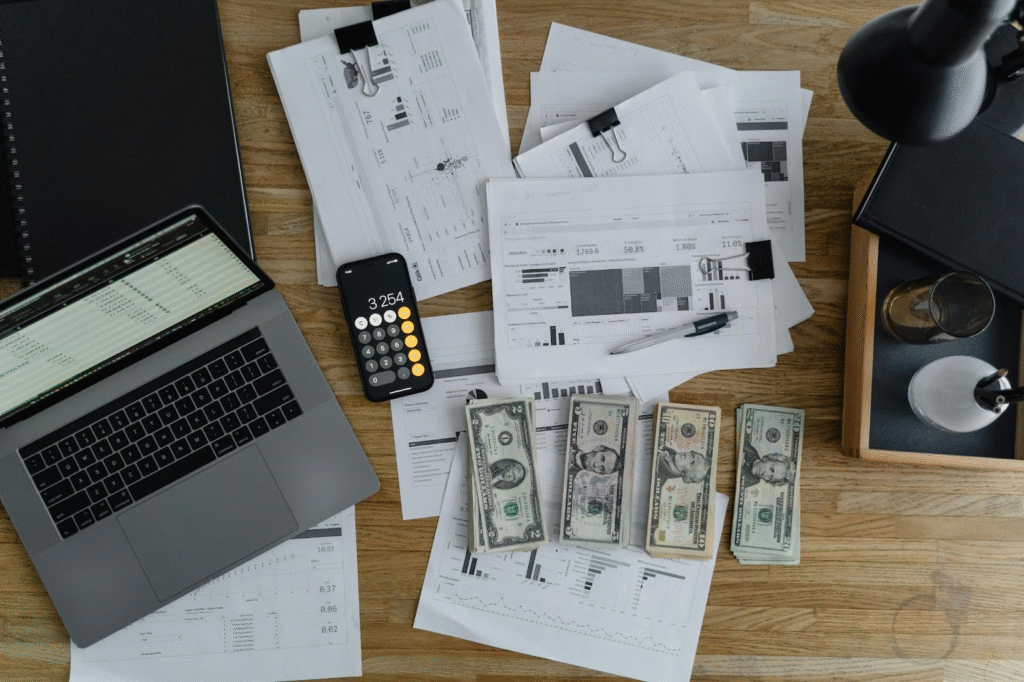
If life has taught us anything, it’s that surprises happen, and they usually come with a price tag.
According to a 2023 report by Bankrate, 57% of Americans cannot afford a $1,000 emergency expense without going into debt.
Another survey by the Federal Reserve found that nearly 37% of adults would struggle to cover a $400 unexpected bill.
These numbers highlight why learning how to build an emergency fund is one of the smartest financial moves you can make.
Whether you earn a little or a lot, creating an emergency savings plan is possible. The good news? You can start small and still make a big difference in your financial security.
In this article, I’ll walk you through:
- What an emergency fund is and why you need one.
- 7 steps on how to build an emergency fund on any budget
- Emergency savings tips for different budgets.
What is an Emergency Fund and Why Do You Need One?
An emergency fund is money you intentionally set aside to handle life’s “Just in case” moments.
It’s for those times that lifestyle throws a not-so-good surprise, like a sudden trip to the hospital or an unexpected layoff from work.
The main idea behind learning how to build an emergency fund is to make sure you’re not forced to rely on credit cards, loans, or borrowing from friends when these surprises pop up.
Here’s why you need one:
- To Avoid Debt: Without an emergency fund, most people swipe their credit cards or take out loans. That can lead to high-interest debt, which only makes emergencies more stressful.
- Financial Stability: Having emergency savings means you can continue paying for essential needs like food, rent, and bills even if your income suddenly stops.
- Flexibility: With money set aside, you can make smarter financial decisions without rushing into bad financial decisions out of desperation.
7 Steps on How to Build an Emergency Fund
- Set a clear goal for your emergency fund
- Track Your Spending to Build an Emergency Fund Faster
- Open a separate savings account
- Automate your savings
- Save extra income
- Cut costs and reallocate your savings
- Review and Adjust Regularly
1. Set a Clear Goal for Your Emergency Fund

Before you start saving, you should know how much your emergency fund should be.
Financial experts often recommend saving at least 3 to 6 months’ worth of living expenses, but that might feel overwhelming at first.
If you’re learning how to build an emergency fund, you should start small. Your first milestone could be 50,000, 100,000, or even $500, enough to cover minor expenses like utility bills.
Once you hit that target, you can gradually work towards a bigger target.
2. Track Your Spending to Build an Emergency Fund Faster
Truth be told, you can’t save what you don’t track. The second step in building an emergency fund is understanding where your money currently goes.
Take a week to record every expense, such as subscriptions, food, entertainment, and transportation. Chances are you’ll find areas where you can cut back.
Do you really need that extra streaming service or daily takeout? If not, redirect even small amounts, like ₦1,000 or $5, into your emergency fund.
This is one of the simplest budgeting tips you can apply to your daily life, and it’s the first step to freeing up extra cash for your emergency fund.
3. Open a Separate Savings Account

One of the best tips for building an emergency fund is to keep it separate from your regular spending money.
Having a dedicated savings account, preferably one with no easy debit card access, reduces the temptation to dip into it for non-emergencies.
Look for a high-yield savings account that offers interest, so your money grows passively.
Many banks even let you set up automatic transfers, making it much easier to follow your emergency savings plan.
4. Automate Your Savings
Discipline is easier when you don’t rely on willpower alone. Automating your savings ensures consistency.
Set up an automatic transfer from your checking account to your emergency savings each payday, even if it’s a small amount.
This step is especially useful if you’re working with an emergency fund for beginners. Automation removes the decision-making process from your hands and ensures steady progress.
Over time, even small automated deposits will add up to a strong financial cushion.
5. Save Extra Income

Whenever you get unexpected money like tax refunds, bonuses, cash gifts, or side hustle income, don’t spend it all at once.
Put away what you can, even if it’s just $5 or $10 per week.
This step is especially powerful because it accelerates your savings without affecting your regular budget.
A structured emergency savings plan helps you see progress, no matter how little you contribute.
6. Cut Costs and Reallocate Your Savings
Another effective way to build an emergency fund is to reduce your spending on luxuries and allocate that money to savings.
Cancel unused subscriptions, cook at home instead of eating out, or limit online shopping. Even the smallest lifestyle changes can free up extra cash.
By sticking to an emergency savings plan, you’ll be surprised at how quickly your emergency fund grows.
7. Review and Adjust Regularly
Once you’ve started, don’t just set it and forget it. Review your progress every few months.
If your income changes or your expenses increase, adjust your savings target.
Using an emergency savings calculator can help you track your progress and make sure your fund is on track to cover real-life emergencies.
Emergency Saving Tips for Different Budgets

When it comes to financial security, the truth is your budget doesn’t have to hold you back. Whether you earn a lot or a little, the key lies in being intentional.
If you’ve been thinking about how to build an emergency fund on any budget, the good news is that there are creative ways to make it happen.
1. On a Low Income
If your paycheck barely covers the basics, saving money can feel impossible, but it doesn’t have to be. You can start small by committing to set aside $5 to $10 at a time.
That might mean cooking your meals at home rather than ordering takeout.
Over the course of a year, even saving $10 a week adds up to over $500. That’s a solid start for a beginner’s emergency fund.
2. On a Moderate Income
With a bit more breathing room in your budget, you can take your emergency savings plans to the next level.
Aim to set aside 5% to 10% of your paycheck, and the easiest way to achieve this is to automate the process.
Set aside a portion of your income as soon as you’re paid, before you’re tempted to spend it.
If you’re curious about how much you should be putting aside, an emergency savings calculator can help you figure out the right number based on your expenses and goals.
3. On a Higher Income
If you’re in a strong financial position, don’t waste the opportunity. With a higher income, you can build an emergency cushion much faster.
Challenge yourself to save 15% to 20% of your paycheck until you reach at least three to six months’ worth of expenses.
This is also a great time to think beyond the basics. For example, if you already have three months’ worth saved, keep going until you hit six or even nine months.
The more security you have, the more peace of mind you’ll enjoy when life throws surprises your way.
Final Thoughts on How to Build an Emergency Fund
Learning how to build an emergency fund isn’t just for the wealthy; it’s for everyone, regardless of budget.
By following these simple steps, creating an emergency fund for beginners becomes simple and achievable.
Whether you’re starting with $10 or $5 a week or a structured, effective savings plan, the important thing is to start now.
With discipline, consistency, and tools like an emergency savings calculator, you’ll be able to prepare for life’s unexpected challenges.
Frequently Asked Questions
1. Can I Invest my Emergency Fund?
No, it’s best to keep it in a safe, easily accessible account. The money isn’t for growth but for security.
2. How Do I Stop Reaching for It for Non-Emergencies?
Keep it in a separate account and remind yourself that shopping, vacations, and eating out don’t count as emergencies.
3. What if I Can’t Save Much Right Now?
That’s okay, you can start small. Saving even $5 is better than nothing. Over time, small efforts build a strong fund. This approach works well for families living paycheck to paycheck or even for those saving as a single mom managing multiple responsibilities.
4. What Is the 3-6-9 Rule Emergency Fund?
The “3-6-9 Rule” for emergency funds suggests saving for 3, 6, or 9 months of living expenses based on your personal circumstances.
5. What is an Emergency Fund Calculator?
An emergency fund calculator is a financial tool that helps you figure out how much money you should set aside in case of unexpected expenses, such as medical bills or job loss.